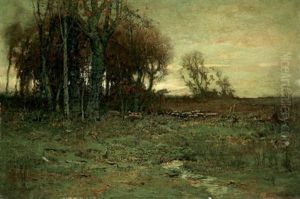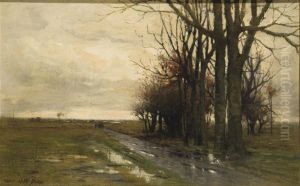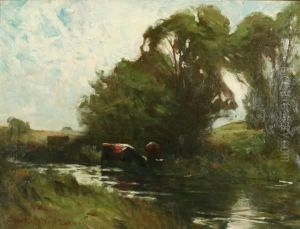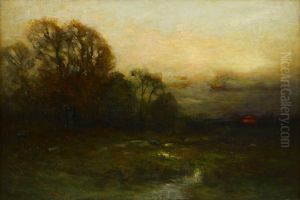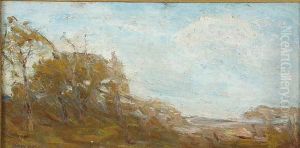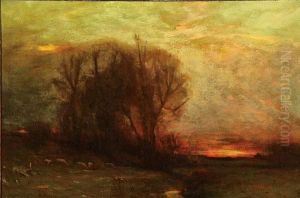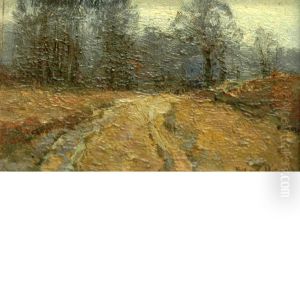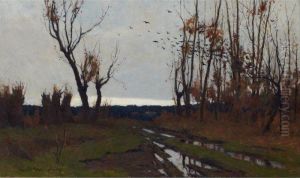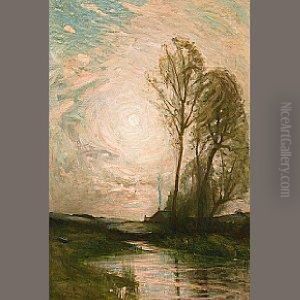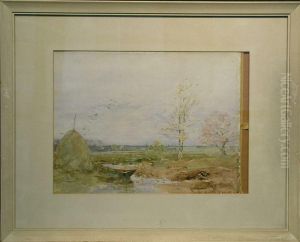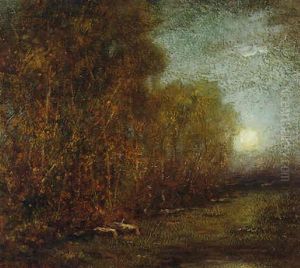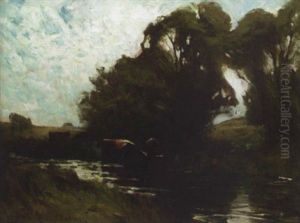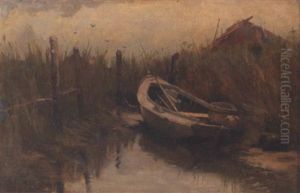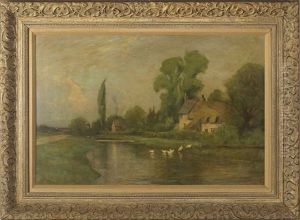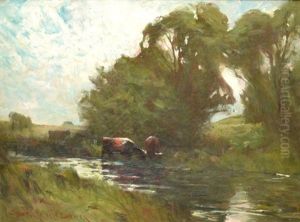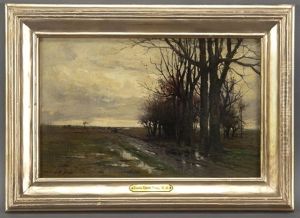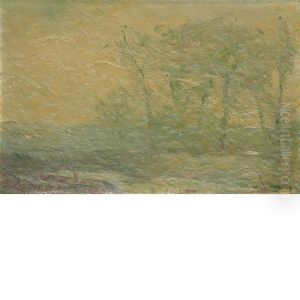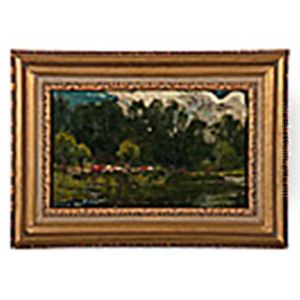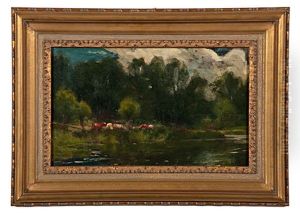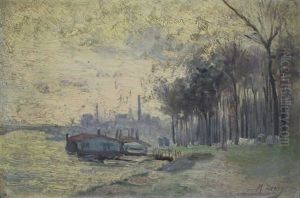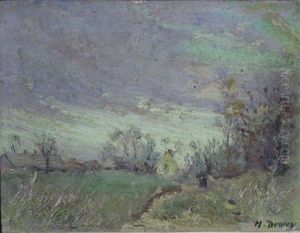Charles Melville Dewey Paintings
Charles Melville Dewey was an American painter known for his tonalist landscapes that often depicted mood-driven scenes with a subdued color palette. Born on April 16, 1849, in Lowville, New York, Dewey embarked on his artistic journey by studying at the National Academy of Design in New York City. His education continued in Paris at the Académie Julian under the tutelage of master painters like Gustave Boulanger and Jules Joseph Lefebvre.
Dewey's work was heavily influenced by the Barbizon School, a group of French painters who emphasized naturalism and often worked directly from nature. He was also inspired by the tonalism movement, which emphasized the use of color and tone to create harmonious and emotionally evocative landscapes. Dewey's paintings often featured twilight or dawn settings, with a soft diffusion of light that created a sense of calm and contemplation.
Throughout his career, Dewey exhibited his work at prestigious venues such as the National Academy of Design, the Boston Art Club, and the Pennsylvania Academy of the Fine Arts. His paintings were well-received, and he gained a reputation for his ability to capture the serene and subtle beauty of the American landscape.
Dewey's artistic approach was somewhat conservative, and as a result, he did not embrace the more radical movements of modernism that emerged in the early 20th century. Nevertheless, his work has endured in its appeal, and today, it can be found in the collections of various museums and private collectors.
Charles Melville Dewey passed away on October 21, 1937, in New York City. His legacy as a tonalist painter continues to be appreciated by art historians and collectors who value the quiet and introspective qualities of his landscapes.
